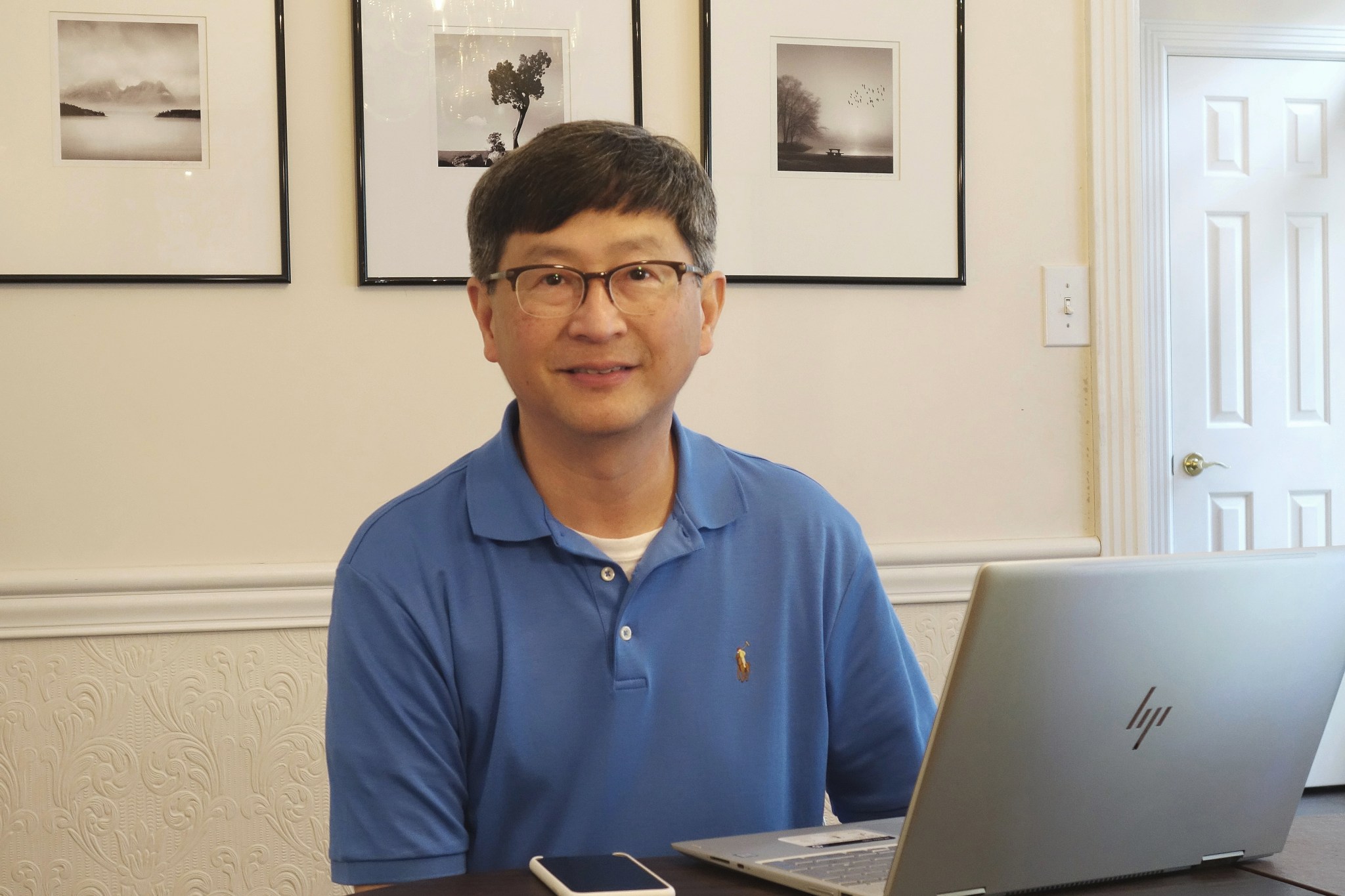Jonathan Lee’s work with cutting-edge alloys has made him one of the most successful inventors in the history of NASA’s Marshall Space Flight Center and the agency, but some of his latest projects are driven by matters of the heart, not industry.
Lee’s father, David V. Lee, was hospitalized in Huntsville in critical condition with COVID-19 in late March. He was not allowed visitors, due to safety protocols, and died alone.
“The sudden loss of my father due to COVID-19 has given me a burning desire to do something toward this global pandemic,” said Lee, a structural materials engineer for the Space Launch System and a project scientist for the International Space Station. “So, when NASA launched an agencywide call in April for ideas to help the nation, I responded with a vengeance. Working on these inventions turned out to be great mental therapy for me to cope with the loss of my father. This work was good for me, good for NASA, and good for the nation. How could I say no to that?”
In July, Lee submitted six invention proposals for NASA – innovative ideas that could one day help reduce bacterial and viral transmission, including coronavirus.
“These inventions also have a dual use for commercialization and for NASA’s in-space sterilization to minimize the risk of exposure of the flight crew to harmful pathogens,” Lee said. “Previous NASA research has given some indication that bacteria and viruses may be more virulent in space and crew immune systems may change in response to microgravity and radiation, potentially making the crew more susceptible to infections.”
Lee joined Marshall in 1988, and since 1990 has worked in the Materials & Processes Laboratory’s Metallic Materials Division. During the 1990s, Lee and Po Chen co-invented NASA 398, a light-weight, high-strength, and high-wear-resistant aluminum alloy, suitable for high-temperature applications. NASA 398 has enjoyed incredible success on the commercial market. According to Terry Taylor, manager of Marshall’s Technology Transfer Program, Bombardier Recreational Products of Valcourt, Canada, has sold more than 700,000 Evinrude E-TEC outboard motors that feature a piston made of NASA 398. The alloy is used by Twin City Fan of Minneapolis for blades in emergency ventilation fans in underground streets and traffic tunnels in cities across the world. NASA 398 is also used in Arctic Cat snowmobiles and there are more than a dozen sublicenses for various commercial applications including motor scooters and motorcycles.
“Statistically speaking, I am told that 97% of all patents never make any money,” Lee said. “So, we were skeptical about the commercialization potential for NASA 398 back in 2001. Neither of us could envision it having the success that it has now.”
Lee, Chen, and NASA 398 were inducted into the Space Foundation’s Space Technology Hall of Fame in 2018.
Another of Lee’s inventions is NASA 427, a cast alloy that is cheaper to produce than the forging 6061 aluminum alloy, and that can cast complex-shaped parts that 6061 cannot. In July, NASA licensed the alloy to Hyperion Motors Company of Orange, California, for manufacturing of control arms for steering wheel components.
“Weight and cost savings are the primary benefits of NASA 427, without sacrificing the strength performance of 6061 forging alloy,” Lee said.
During his three decades at Marshall, Lee has been involved with multiple teams that successfully supported NASA’s space flight programs. Among those was the NASA- Lockheed Martin Orion Launch Abort System that will be part of the Artemis I and II lunar missions. The team recently won the 2020 Aviation Week Program Excellence Award in the Special Projects category.
Lee was raised in South Vietnam. In 1975, at the age of 16, he and his family were airlifted by the American military to the United States as asylum refugees from the Vietnam War. The family settled in Huntsville that year and became U.S. citizens in 1982. Lee earned his bachelor’s and master’s degrees in mechanical engineering from the University of Alabama in Huntsville in 1982 and 1984, respectively.
While attending Huntsville High School, Lee’s favorite subjects were art and science. He was inspired by the imaginative works in art and creative works in engineering by Leonardo da Vinci. Lee minored in visual arts and photography in college, and among his hobbies is landscape photography in the minimalist style.
“One of my favorite quotes from Albert Einstein is, ‘Imagination is more important than knowledge,’” Lee said. “So, wanting to be an inventor or an artist has shaped my career path from an early age.”
NASA inventors are encouraged to participate in the agency’s Technology Transfer Program, sharing any inventions here. Contact Taylor for more information.



























